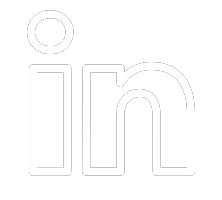Project timelines are the backbone of successful project management. They provide a structured roadmap that guides the entire project, from the initial concept to the final deliverables. A well-designed timeline not only helps in organizing tasks but also ensures effective resource allocation, risk management, and timely project completion. In this blog, we will explore the key components of project timelines and offer insights into creating and managing them effectively.
Defining Project Timelines
A project timeline is a visual representation of the sequence of tasks, milestones, and deadlines that need to be met to achieve project objectives. It outlines the start and end dates of each task, allowing project managers and team members to understand the project’s progression over time.
Components of a Project Timeline
Tasks and Activities: Break down the project into smaller tasks and activities. Each task should be specific, measurable, achievable, relevant, and time-bound (SMART). Assign responsibilities for each task to team members or stakeholders.
Milestones: These are significant points in the project that mark the completion of a key phase or the achievement of an important goal. Milestones help track progress and provide a sense of accomplishment.
Dependencies: Tasks in a project often have dependencies, meaning the completion of one task is dependent on the completion of another. Understanding these dependencies is crucial for scheduling tasks in the right order.
Duration: Estimate the time needed to complete each task. This helps in allocating resources and managing expectations about the project’s timeline.
Start and End Dates: Based on task durations and dependencies, determine the start and end dates for each task and the project as a whole.
Resource Allocation: Assign the necessary resources, such as human resources, materials, and equipment, to each task. This prevents overloading team members and ensures tasks are adequately supported.
Creating a Project Timeline
Use Visual Tools: Project management software like Microsoft Project, Asana, Trello, or even a simple Gantt chart in Excel can help create visual representations of project timelines.
Collaboration: Involve team members in the timeline creation process. Their input can provide valuable insights into task durations, dependencies, and potential roadblocks.
Buffer Time: Account for unforeseen delays by including buffer time between tasks and milestones. This helps in managing unexpected challenges without derailing the entire project.
Managing Project Timelines
Regular Monitoring: Keep a close eye on the project’s progress. Regularly update the timeline as tasks are completed or delayed. This allows for timely intervention if any issues arise.
Communication: Maintain open communication with team members, stakeholders, and clients about the project’s timeline. Transparency about progress and challenges fosters trust and collaboration.
Adaptability: Project timelines are not set in stone. Changes in scope, resource availability, or external factors can impact the timeline. Be prepared to adjust and re-evaluate as needed.
Risk Management: Identify potential risks that could impact the project timeline and develop contingency plans to address them. This proactive approach minimizes disruptions.
Conclusion
Project timelines are powerful tools that guide a project from its inception to successful completion. By defining tasks, milestones, dependencies, and resource allocation, project managers ensure a structured and organized approach to project execution. Regular monitoring, communication, and adaptability are key to managing timelines effectively and navigating any challenges that may arise. Remember, a well-managed project timeline sets the stage for a successful project outcome.




